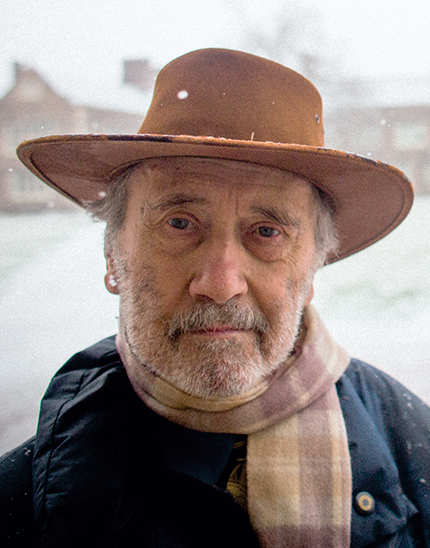Ernst K. Zinner
DOI: 10.1063/PT.3.3088
Ernst K. Zinner, a physicist, astrophysicist, and pioneering isotope cosmochemist, died on 30 July 2015 after a heroic 20-year struggle with mantle-cell lymphoma. We who knew him will remember his courage and spirit as he pursued extraordinary scientific goals while undergoing frontier cancer treatments that made him a minor celebrity in medical research.

Ernst K. Zinner

Zinner was born on 30 January 1937 in St. Peter in der Au, a small Austrian town about 100 miles west of Vienna. He received his undergraduate degree in physics from the Technical University of Vienna and then moved to the US in the mid 1960s to attend Washington University in St. Louis. In 1972 he became the last person to earn a PhD in high-energy particle physics from the university. Physicist Robert Walker then invited Zinner to join him as a research associate in the university’s new laboratory for space physics. Zinner’s achievements in physics were intimately entwined with the emergence of that new physics group. About 15 years later he was promoted to research professor in physics and in Earth and planetary sciences.
During the first phase of Zinner’s career in space physics, he published significant works on heavy ions in the solar wind, on interplanetary dust particles, and on the lunar surface environment through experimental studies of lunar samples. He also began the work that would define the remainder of his career: a decade-long effort to turn a new and unreliable technique, secondary ion mass spectrometry (SIMS), into a robust tool for chemical and isotopic analysis. His numerous trips to Houston, Texas, enabled him to work on the ion microprobe at the Johnson Space Center.
Zinner took a one-year appointment in 1980 as a visiting professor at the Technical University of Vienna. His purpose was to use and study properties of its new Cameca IMS-3f ion microprobe because Walker had obtained funding for a similar instrument for Washington University. After many tests of their own new microprobe, Zinner and his Washington University team mounted an interplanetary dust particle in the ion probe and showed it to contain a deuterium-to-hydrogen ratio 2.1 times the ratio in terrestrial water. Their 1983 publication in Nature began the now unforgettable SIMS era of isotopic discoveries in extraterrestrial samples.
Within two years Zinner had found large excesses and deficits of the isotopes calcium-48 and titanium-50 in small (50 μm) meteoritic hibonite crystals. Those crystals pointed to the existence of presolar stardust grains carrying a fossil record of stellar nucleosynthesis. A decade earlier I had described the probable existence of such grains in interstellar matter and named them stardust. The existence of stardust was also hinted at by the presence of noble-gas isotopic anomalies in bulk meteorites. But those were not stardust itself.
To search for individual stardust grains only microns in size, Zinner collaborated with chemists at the University of Chicago who in 1987 produced acid-insoluble residues of bulk meteorites. The residues were rich in silicon carbide grains, graphite grains, and nanometer-sized diamonds. Zinner’s SIMS measurements revealed an astonishing range of isotopic ratios within many elements in those grains, only explainable as compositions evolved by nuclear reactions in the interiors of stars. The grains were the sought-after stardust.
Zinner and a host of collaborators quickly improved their techniques. Soon afterward they documented additional types of stardust grains and tied their isotopes to different types of stars, including evolved red giants and supernova explosions. During the two decades following their discovery, Zinner published about 70 papers on stardust and a comparable number on other new isotopic discoveries about meteoritic samples. From the beginning, Zinner worked closely with nuclear astrophysics theorists to extract the maximum information from those grains. From 1990 until his death, Zinner and I organized celebrated annual isotopic-anomaly workshops sponsored by Clemson University and Washington University.
Consider how stunning Zinner’s documentation of stardust is. Those tiny stones are literally solid chunks of stars that were born and died before Earth’s existence. We readily accept today what seemed fantastic two decades ago. In terrestrial laboratories, scientists now study stardust as data for astrophysics, nucleosynthesis, and cosmochemistry. Zinner’s work qualifies for a Nobel Prize, in this writer’s opinion. Although that cannot now happen, we can take satisfaction that in 1997 he was awarded the J. Lawrence Smith Medal, the National Academy of Sciences’ top award for investigations of meteoric bodies.
Zinner and his wife, Brigitte, were a generous couple who would host at their home the many students and senior scientists who came from around the world to work in his lab. And he took immense pleasure in mentoring the many students with whom he worked.
A final, poetic narrative illuminates Zinner the man. He loved classical music and from childhood was an accomplished pianist. In St. Louis he played the harpsichord in a baroque music ensemble. And when his 4-year-old son began learning to play the cello, Zinner, at age 55, also took lessons so they could play together.
More about the Authors
Donald Clayton. Clemson University, Seneca, South Carolina.




